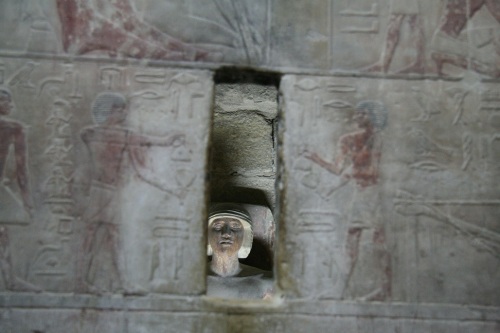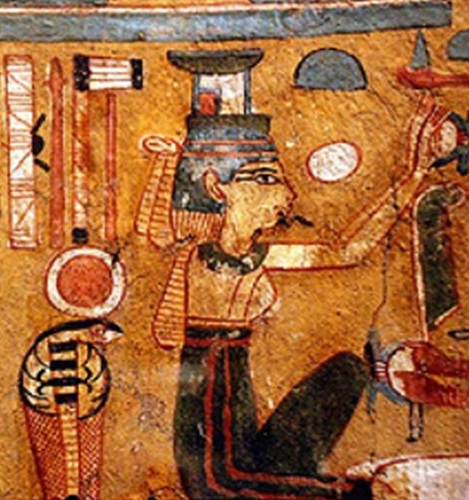The image in Ancient Egypt had a power in itself.
Why? Because in addition to evoking a reality, they made it arise. In Ancient Egypt everything that was depicted was also happening.
The Power of Scenes on Walls.
The mural scenes that we observe in the mastabas of the Old Kingdom depict very realistically scenes of daily life. However, they did not consist in the memory of an earthly world that the deceased wanted to take to the Hereafter. In the belief of Ancient Egypt those scenes were moments and situations that happened perpetually.

Making Bread. Mastaba of Ty in Saqqara. V Dynasty. Photo: Mª Rosa Valdesogo.
The depictions of bread manufacture or agricultural and livestock activities provided food for the dead eternally. The iconographic environment surrounding the deceased was an ideal reality in which he would live forever and which was in his best interest.
In the same way, the ancient Egyptian reliefs that invaded the walls and columns of the temples (whether funerary or state) immortalized the rituals that took place in them. It was the way to make the rite always happen.















